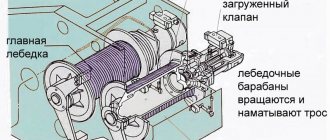The battery is responsible for generating the electrical energy needed to operate important machine devices. And since it is impossible to imagine operating a car without a battery, the importance of its proper operation becomes obvious.
This article is a brief instruction on what proper maintenance of a car battery includes, since competent and timely battery service makes it possible to use it for its entire service life without any problems.
Energy balance
Indicators related to the energy balance are the battery capacity, the required power to power current consumers, the generator, and idle speed. At the same time, the battery itself is responsible for the accumulation. It can accumulate and release electrical energy.
For a sufficient charge level of the battery, a stable recharge from the car's generator is required. If the amount of energy supplied by the battery exceeds the amount received by the battery, then the battery gradually becomes “empty”.
Energy balance rules:
- Balanced ratios between energy received and energy released during discharge are successful factors in maintaining a healthy energy balance.
- Installing additional current consumers may disrupt the stability of the energy balance.
- The main parameters that determine the energy balance are the total amount of current used by consumers and the individual driving conditions of the vehicle.
Optimal loading conditions
A favorable load for a car battery is the one at which it is charged. At the same time, the energy generated by the generator is sufficient for both consumers and the car battery.
For example, when a car is driven for a long time, its generator produces enough current to light the road, operate the navigation system, etc., and the remaining energy is consumed for charging.
Unfavorable loading conditions
Operating the engine at low speeds, for example, when driving around the city in cool weather at low air temperatures, with a large number of current consumers turned on: heated seats, fog lights, heated mirrors and glass, leads to insufficient current generated by the generator.
In order to compensate for the lack of current, energy is additionally consumed from the car battery. Over time, this scheme leads to battery discharge.
A critical condition for this situation may be a decrease in the battery’s ability to accept charging energy under very low temperature conditions.
Periodic discharge (for example, activation of the Coming Home/Leaving Home functions, operation of systems after the engine is turned off) at very low temperatures is not compensated.
Heat
High temperature conditions serve as a factor that has a direct effect on the chemical processes occurring in the battery, namely, it is their accelerator. It is important to note that an increase in temperature by 10 degrees entails a doubling of the reaction rate.
The battery power tends to decrease and this is due to a decrease in the viscosity of the electrolyte substance. At the same time, the capacity indicator increases.
An increase in temperature has a negative effect on the electrode plates, resulting in increased corrosion on the grids.
The impact of high temperature conditions has an unfavorable effect on the battery and leads to self-discharge of the battery due to chemical processes.
Low temperature
The effect of chemical reactions under low temperature conditions is that the viscosity of sulfuric acid increases. Chemical processes are not as active. The internal resistance of the battery increases. In the future, this is reflected in the effective capacity of the battery, and becomes increasingly negative as the temperature decreases.
In other words, in cold weather there is a possibility that the car starter will not be able to rotate at the required frequency and the engine will not start, so the nominal capacity of the battery should not be too low.
Cold engine start
A cold start puts a large load on the battery that is detrimental to it. The very fact of increasing the load force arises as a result of:
- Low temperatures in the cold season have a direct impact on the viscosity of the oil in a car engine - it increases, which in turn increases the resistance to engine cranking.
- The internal resistance indicator increases at low temperatures, as a result of which the output power of the battery decreases.
- During the cold season, the battery is not fully charged.
To operate the battery during a cold engine start at maximum power, it must be in good condition. To do this, before the start of the winter season, it is recommended to check its basic parameters.
Another important point is regular battery care; if we are talking about a serviceable battery, then it would be useful to check the electrolyte level. If there is a separate belt for the generator, then sometimes you need to check its tension. At the first signs of discharge, timely recharging of the battery is recommended.
Take care of your battery
At sub-zero temperatures, the load on the battery is greatest, and more power is required to start the engine. It is worth considering the fact: it takes some time to restore the battery charge, since the frozen electrolyte substance slowly circulates inside the plates. Because of this feature, if the engine starts unsuccessfully for the first time, restarting is recommended after a few minutes. In cases where the driver continuously tries to start the starter in cold weather, the battery spends a huge amount of energy and, as a result, is completely discharged.
Safety regulations
Batteries are filled with sulfuric acid and during the normal charge-discharge cycle they release explosive gases (hydrogen and oxygen). To avoid personal injury or vehicle damage, strictly follow the following safety precautions:
- Before working on any electrical components of the vehicle, disconnect the power cable from the negative terminal of the battery. When the negative power cable is disconnected, all electrical circuits in the vehicle will be open, preventing any electrical component from accidentally shorting to ground. An electrical spark creates the potential for injury and fire.
- Any work related to the battery must be performed with safety glasses.
- To protect yourself from getting the sulfuric acid contained in the battery on your skin, wear protective clothing.
- Follow the safety precautions specified in the maintenance procedures when handling equipment used for battery maintenance and testing.
- It is strictly forbidden to smoke or use open fire in the immediate vicinity of the battery.
Visual inspection
Before measuring the basic parameters, proper maintenance of a car battery should begin by inspecting the external condition of the battery. It can be assessed according to the following parameters:
Case condition
It is necessary to pay attention to the presence of chips and cracks on the monoblock, this may lead to the leakage of the liquid substance of the battery - electrolyte. Since the contents of the battery are an aggressive chemical compound, contact with vehicle parts may damage them.
Battery mounting device
The life of the battery can be greatly influenced by vibration when the car is moving, which occurs due to insufficiently good fastening of the battery. This factor can cause the electrode arrays to fail, and ultimately lead to the danger of a battery explosion.
Insufficiently secure mounting of the battery in the car can lead to reduced safety in the event of an accident. So, if the battery is not secured with a clamping bar, this may result in damage to its case.
It is necessary to pay attention to the fact that the clamping bar on the battery case must fit tightly to the mounting lug and sit in specially provided recesses - clamps. Here, as an option for additional strength, you should install a transition strip.
On some types of batteries, the locking elements are located on one side, on others - on both. Specially installed protrusions on the mounting plate keep the battery case from moving.
Pole terminals
Poor terminal connections can cause poor contact between these connections.
Incorrectly seated terminals and loose terminals can create a risk of heating and burning of the cables connecting these elements.
Monitoring electrolyte sufficiency
Checking the electrolyte level and maintaining it at the correct level is the key to long-term battery operation. An insufficient electrolyte level causes a decrease in capacity because the upper parts of the electrodes dry out.
This situation aggravates the condition of the electrodes in that the corrosion of battery parts progresses, and ultimately can lead to the risk of explosion.
Thus, as soon as the amount of electrolyte in the battery decreases, it is necessary to correct this by adding distilled water.
An excess of electrolyte in the battery casing can lead to its leakage from the monoblock and onto nearby vehicle parts.
When visually checking the electrolyte through the battery case, it is necessary to monitor the same level in all galvanic cells; a difference of 10 mm or more indicates an internal malfunction of the battery.
Maintenance free batteries
In batteries of this type, there is no need to monitor the electrolyte level; therefore, opening the case of such a battery is not allowed. An indicator is used for monitoring, which indicates that the battery life has expired.
In a battery with a transparent case, the level of the substance is monitored using o and “minimum”.
Maintenance-free battery device
In batteries with fiberglass filler there is no level indicator; such batteries usually have a black case, so it is impossible to check the electrolyte level.
Maintenance methods and frequency
Periodic maintenance can be divided into 2 groups of procedures that are carried out in relation to the battery:
- visual inspection, assessment of condition by external signs;
- diagnostics;
- maintenance, service operations.
In the first case, it is enough to simply look at the battery, make sure the body is intact, check for cracks, signs of leakage, oxidation of contacts, etc.
Next, more serious work is carried out.
Correct diagnostics of a car battery involves the following activities:
- checking the voltage when the circuit is open, that is, when the battery is not connected to the car;
- assessment of operating parameters when starting the engine;
- checking the level and condition of the electrolyte.
All these procedures, including visual inspection, must be carried out at certain intervals, without waiting for obvious problems with the battery to appear.
Experienced motorists advise combining battery diagnostics with checking the oil level, washer fluid, tire pressure, etc. That is, this should become a habit for the car owner.
As for maintenance or service operations, these works include:
- periodic unscheduled charging by an external device;
- checking and changing the electrolyte density;
- testing using a load fork;
- checking current leakage;
- prevention of sulfation.
To deal with maintenance issues yourself, you need to acquire the appropriate set of tools and materials.
The main components are:
- multimeter;
- load fork;
- hydrometer;
- memory;
- electrolyte;
- distilled water.
In addition to a hydrometer, to check the density you will need a bulb and a transparent tube made of glass or plastic. Such devices can be purchased as a kit.
When working with batteries, strictly follow safety rules. Wear protective gloves and goggles. It is advisable to work in overalls.
The service includes a fairly large list of activities. Each of them requires a separate explanation and some recommendations.
Checking battery health
The battery performance indicator can be assessed by the amount of current that the battery is capable of delivering in a fully charged state for a certain time at a set temperature.
The standards set the current value at the pole terminals; accordingly, this indicator should not fall below the norm.
You can evaluate the voltage level using a battery tester. With this test, there is no need to disconnect the battery from the vehicle. This test will be able to show how suitable the battery is for the car during its warranty period.
This test can be carried out once and repeated after 100% recharging of the battery.
How to maintain maintenance-free batteries?
Nuances that must be taken into account when carrying out maintenance of maintenance-free products:
- Diagnosis of the condition of the housing. It is necessary to determine possible defects and damage to the device. Electrolyte leaks are not allowed.
- Diagnostics and repair of drainage channels. It is necessary to clean them from dirt and dust.
- Determining the location of the working solution leak.
- Removing residues and smudges of alkaline acid or other acidic formations.
- Treating battery terminals and lubricating them with lubricants. This will prevent rapid destruction and increase the service life.
- Checking the condition of the battery terminals.
Battery charge
Under what conditions can the battery be charged?
If the battery performance readings are determined in such a way that it requires charging, the following conditions must be observed: the room is well ventilated, the battery temperature is 10 degrees Celsius, when the electrolyte temperature rises to 55 degrees, the procedure must be stopped. Violation of the latter can lead to overheating or even boiling of the electrolyte, which can cause the plates to warp, ultimately leading to battery failure. It must be remembered that attempts to speed up the battery charge may damage it. For maintenance-free batteries, the main indicator during charging is voltage.
Battery charging devices:
- Charger (charger).
- Automatic charger.
- Adapter for charging the battery.
How to charge the battery
The charger must provide a charge voltage of 16–16.6 V. Batteries are charged in two ways: direct current or voltage.
When charging with direct current, it is necessary to monitor its value every 1–2 hours. Such a charge is produced with a current equal to 10% of the battery capacity for 20 hours. For a battery with a capacity of 45 A/h, the charging current is 4.5 A; this current value must be maintained throughout the entire charging time.
At the end of the battery charge, increased gas emission may occur; to minimize this effect, as well as to increase the state of charge of the battery, a stepwise reduction in the current is necessary. When the voltage reaches 14.4 V, the current is reduced by half, using the example of a capacity of 45 A/h, to 2.75 A; at a voltage of 15 V, it is again reduced by half, to 1.38 A.
The battery is considered charged if the voltage and current do not change for one or two hours, usually this corresponds to a voltage of 16.3-16.4 V.
When charging with constant voltage, the charging speed depends on the voltage:
- at 14.4 V, up to 32 hours of charging will be required;
- at 15 V it will take up to 28 hours;
- at 16 V it will take up to 25 hours;
To fully charge the battery during the day, a voltage of 16.4 V is required.
When the charger is turned on, the charging current can reach 50 A or more; to avoid such a large charging current, the charger limits it to 25 A.
As full charge approaches, the voltage at the battery terminals increases to 14.4 V, and the charging current decreases to zero, which allows charging in a fully automatic mode without human intervention.
Pay attention to a deeply discharged battery
If the battery is installed on a car during storage, then one should expect the so-called self-discharge of the battery in the presence of a constant active consumer of electric current.
The indicator at which the battery corresponds to a deeply discharged state is equal to the electrolyte density not exceeding 1.14 g/cm3, which approximately corresponds to a voltage of 11.9 V.
Such batteries must be charged with a reduced current of 1–2 A or a voltage of 12–13 V, since at higher values the battery will not be able to reach its full capacity. When charging, you must ensure that the charge current does not increase to 5% of the nominal battery capacity, for example, for 45 A/h, the current should be no more than 2.25 A.
Special instructions:
- The battery is susceptible to freezing at subzero temperatures due to an increase in the amount of water in the electrolyte. Which occurs when it is discharged.
- If the battery is “frozen”, it will inevitably need to be replaced, since the seal of the case may be compromised due to cracks. If the battery has survived, it can be charged, but only after it has warmed up in the room for at least a day. After charging such a battery, up to 50% of its capacity is lost and it can only be used for a short period of time before purchasing a new one, since its failure is inevitable.
- The reaction of sulfation of electrodes, or in other words the formation of a hard layer, is characteristic of deeply discharged batteries, this affects the battery power: it decreases. This reaction can be avoided if a deeply discharged battery is recharged as quickly as possible.
- The battery needs to be charged for at least a day or more.
When servicing a car battery, it is important to remember that it is a source of increased danger. Due to their design and operating principle, battery components are aggressive chemicals, so remember that timely service and replacement of the battery is a very important point in the proper operation of your car.
Questions on the topic
Filter:AllOpenSolvedClosedWaiting for response
Where is the backup battery located on the Mercedes-Benz E-Class? Is it possible to change it yourself? Answered by User answered 9 months ago
36 views 1 answer. 0 vote.
When parked for more than 3-5 days, the battery is discharged. With what it can be connected? Answered by User answered 9 months ago
38 views 1 answer. 0 vote.
Is it possible to install a larger capacity battery on the Hyundai Solaris? Answered by User answered 9 months ago
31 views 1 answer. 0 vote.
What kind of battery is installed on? Answered by User answered 9 months ago
26 views 1 answer. 0 vote.
How to install a replacement battery on a Chevrolet Cruze? Answered by User answered 9 months ago
27 views 1 answer. 0 vote.
What is the cause of the malfunction of the Mercedes-Benz E-Class backup battery? Answered by User answered 9 months ago
32 views 1 answer. 0 vote.
The UAZ 469 battery is not charging. Answered by User answered 9 months ago
35 views 1 answer. 0 vote.
Tell me which battery to install on Mazda 6 2008? Answered by User Answered 10 months ago
28 views 1 answer. 1 vote.
How to initialize the battery in Mazda CX-7? Answered by User answered 10 months ago
25 views 1 answer. 0 vote.
Ask a Question
Topic No. 2: how to store a standard car battery in the winter in a garage?
Some motorists prefer to park their cars in the garage until spring. In order to start your device without any problems, you will have to make some efforts:
- A garage or any utility room with a positive temperature is ideal for storage; the minimum permissible value is -5°C.
- The battery case must be protected from direct sunlight, otherwise ultraviolet radiation may cause deformation of the plastic.
- Clean the battery from oxidation and dust. Clean the contacts with sandpaper, degrease them and lubricate them with grease and lithol.
- Check the density and level of the electrolyte. The normal concentration is 1.26 g/cm³, and the level should be 10-15 mm above the plates.
- Check the voltage, the nominal value is 12.4 V. If the value is lower, then be sure to charge the battery.
When asked how to store a standard car battery in winter, experts recommend removing it completely from the car. To do this, first unscrew the “minus” and then the positive terminal. This will help prevent short circuits and not think about how long it will take to replace the car’s battery.
Important! There is no need to drain the electrolyte when storing! Refilling will not restore the previous parameters.
A working source of electric current can be stored for about a year without recharging. For calcium batteries, the time frame can be extended - their self-discharge process is minimal. These rules apply to batteries that have been in use for no more than one year. If the battery has already worked for 1.5-2 years, then it needs to be monitored and charged at least once every three months.
Increasing electrolyte density
Let's look separately at how to increase density. After all, a low level reduces the voltage and makes it difficult to start the car engine.
- First you need to measure the density in each battery bank and compare it with the norm for the climate zone.
- Increasing the density occurs by adding an electrolyte of higher density. To do this, use a pear to remove the old solution and fill it with a new one, half the volume of the old one.
- Shake the battery without turning it over to mix the liquids.
- A control measurement of density is carried out, repeating the procedure if necessary until the required values are achieved.
- We fill the remaining volume with distilled water.
Routine care
Car battery care should be carried out regularly, taking into account the intensity of use of the car and the conditions it encounters during the journey. Thus, the external condition of the battery should be checked as often as possible if the motorist is in poor or extreme road conditions : inspect the place in the car where the battery is installed, in order to prevent serious damage to the case and electrolyte leakage, which is possible during shaking or collision with another object. By the way, this is the main reason why battery terminals oxidize. It is also necessary to check whether the fastening has become loose.
Simple regular inspections can be carried out without removing the battery from the vehicle. But if the battery needs to be charged, it should be removed from the car. The case is carefully inspected so as not to miss a possible electrolyte leak. The drainage holes are checked and if they are dirty, they should be cleaned. In the same way, all external battery openings that can be seen on the outside of the batteries should be cleaned regularly.
If an electrolyte leaks, it must be neutralized using ordinary soda: as is known, an alkaline solution neutralizes the effect of acid . The terminals must be lubricated and cleaned with the same soda solution and the voltage level on them must be checked from time to time when the car engine is running. Normally, the voltage in a charged car battery should be between 12 and 14.5 V.
In winter and after the cold season, more careful maintenance of batteries should be carried out. Carrying out regular technical inspection of the battery without removing it from the car is acceptable. But, nevertheless, it is very advisable to remove the battery more often when servicing it, since you can inspect the place where it is installed.
For example, when electrolyte boils away at high temperatures, it often flows into different parts of the machine, and the acid can corrode its interior. The area under the battery needs to be washed, cleaned, lubricated with a rust converter, or even painted.











